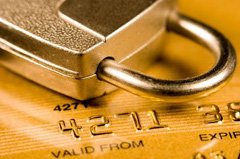
Credit card and Debit card is good alternative to physical money. Most of the people use credit card & debit card to make payments. But this plastic card has to be used with care else you may end up lending in to fraud. According to a Times of India report today, a global gang has skimmed Rs 30 crore off Indian credit card users in just two months.
As per the report, numerous credit cards have been cloned by using skimmers and the card details have been used to make international online transactions. Cloning may happen when cardholders travel to some global destinations that are notorious for cloning. Not only that sometime cloning may happen with cards where the holder has neither travelled abroad nor used it for online transactions.
As per report all top credit card issuers — ICICI Bank, HDFC Bank, Citibank, SBI Cards and Axis Bank — have been affected by these frauds.
So how you can prevent various types of frauds? Here are quick answers.
First thing you must understand that there are two types of transaction you do with your credit card. One is online on internet for making online purchase and other is offline where card is required during transaction like shopping in mall or payment of restraint bill etc.
So your card is exposed to two types of risk cloning during online transaction or during offline transaction.
Online Transaction:-
Check out following tips to prevent online fraud using credit card.
- While doing online transaction with credit card look for website with https as starting web address and not http. Here“s” stands for “secured”. Http website passes information to server in plain text while Https transmit information in encrypted format so information cannot be accessed by any party/hacker other than the client and end server.
- Also look for a lock sign in the address bar as shown in picture below.

- Online transactions in Indian has two step authentications, where apart from using the card number and CVV (three digit number on the reverse side of the card) you need to use password a one-ime password provided by your bank and the secured access password via Verified by Visa and Master secure code, depending on your card service provider. If the website does not ask for authentication do not go ahead with the transaction.
- Check the security certificates on the payment gateways sites. Certificate looks like:-

- Avoid using credit cards online, instead use virtual credit cards. A virtual card is a new 16-digit number, generated on the basis of your physical credit cards. You also get a CVV2 number and expiry date. You can generate a virtual card by doing a one-time registration with your bank. You get a unique login and password. You will need to specify the amount you want to spend with your virtual card. This ensures your entire credit limit is not exposed to the online transaction.
- Get yourself another card with a smaller credit limit, and dedicate this card for use in online transitions alone. That way you would decrease the risk of exposing a high credit limit online.
Offline Transaction:-
There is not much you can do about frauds that happen on your physical card. As card can be cloned easily by doing offline transaction, if person swipe your card on machine which capture data of card he/she can create clone easily. You can take following precaution to prevent this.
- Never give card to anyone. While shopping closely watch your card that it is not swiped on any other machine. But in some cases it is noticed that hacker has attacked EDC machine and stolen all data in this case you can’t do much about this.
- Move to a chip-and-PIN-based card. This card has a sim-card like chip on the front of the card and can be used only with a four digit PIN. So, unless you punch the PIN into the EDC machine, the card transaction won’t go through. Also chip-based card, the account information is stored on the chip and that too in an encrypted format. Since chip-based card stores the data in an encrypted format, the data cannot be skimmed.
- Also ensure that you blacken the CVV number (the three digit number at the reverse of your card) with a permanent ink marker. And, memories the number instead. That way, the fraudster won’t have access to this sensitive information.
The truth is that fraudsters are getting sophisticated by the day. So you have no option but to be careful and follow the tips given above to avoid any fraud.

